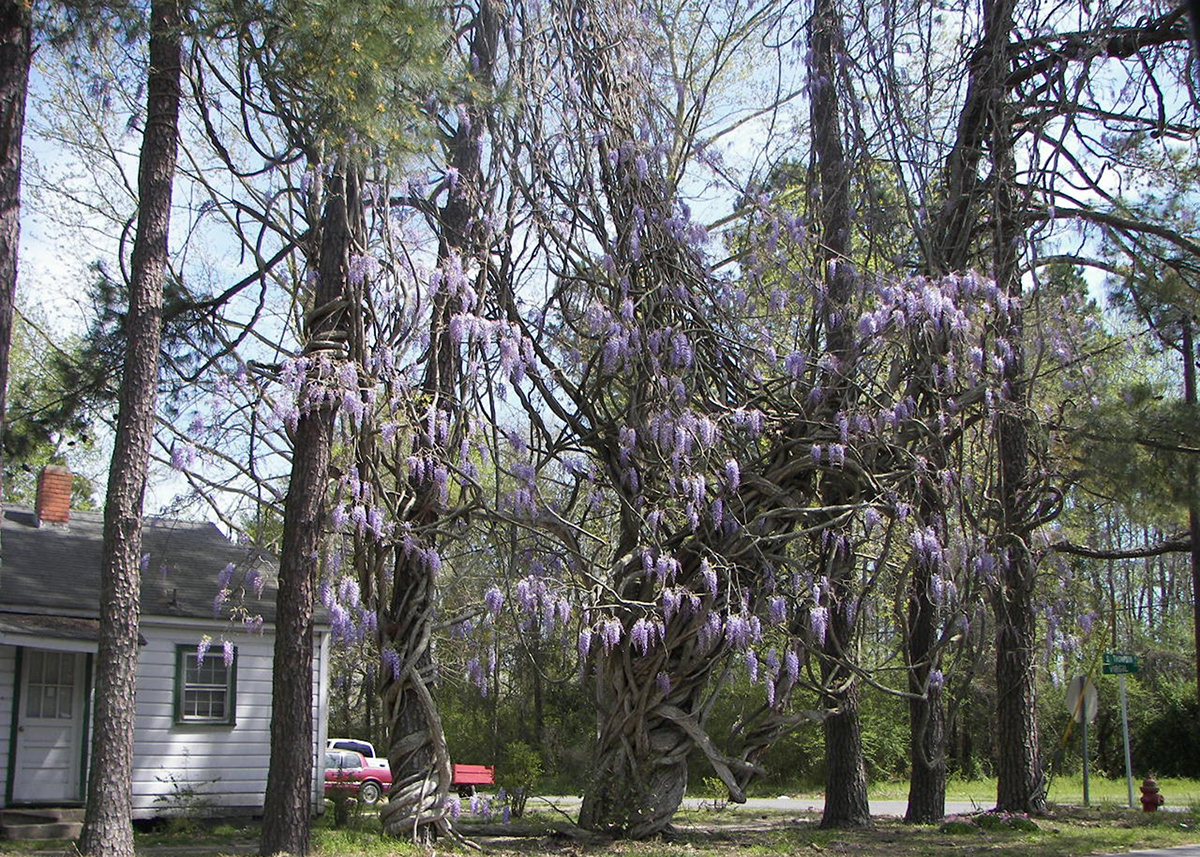Wisteria: Pretty or Pretty Harmful?
Everyone has seen it. Those pretty purple flowers hanging upside down, intertwined with old oak branches. The sight and smell of wisteria can be quite beautiful.

However, the most common types of wisteria found in Mississippi, Chinese and Japanese wisteria, are non-native and pose potential threats to native trees in the landscape.
“Wisteria has been used for decades as an ornamental around homes. Wisteria flowers are aesthetically pleasing and give off a pleasurable aroma,” said Russell Bozeman, Mississippi Forestry Commission (MFC) state forester. “What most people don’t realize is the danger they put native trees and shrubs in when they plant wisteria.”
Once established, wisteria can be difficult to eradicate and can persist for years, strangling native trees and shrubs. They can kill or disfigure desirable trees in the landscape. In addition, wisteria leaves, fruit, and seeds are toxic. (Mississippi State University Extension Service)
Wisteria can be controlled by chemical applications, such as the hack and squirt method, or by mechanical controls. Mechanical control, however, tends to be costly and labor-intensive.
“The Mississippi Forestry Commission recommends homeowners and landowners try to eliminate this invasive plant, using whatever means they can,” Bozeman said. “The best way to control non-native wisteria is not to use it as part of your landscaping.”
There are several native species, such as American wisteria and sweet azalea, available as alternatives to Chinese or Japanese wisteria. These alternatives are showy and fragrant and have less risk of harming other native trees and shrubs.
Click here for more information about Chinese and Japanese wisteria.
